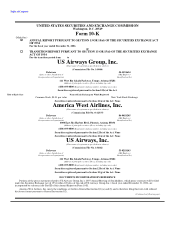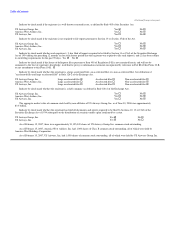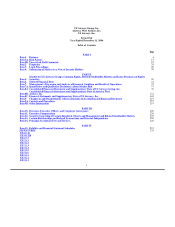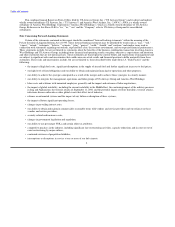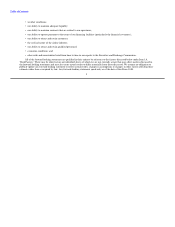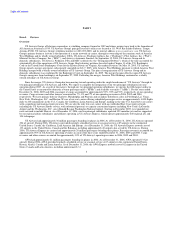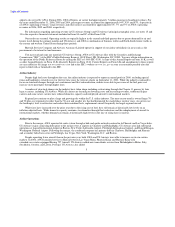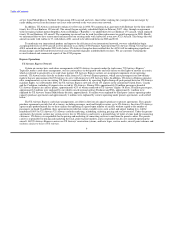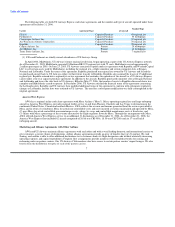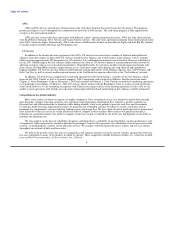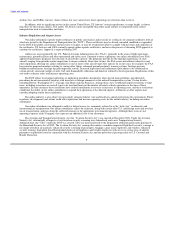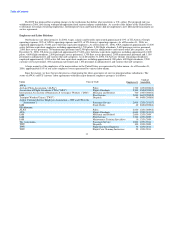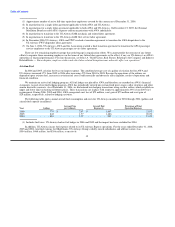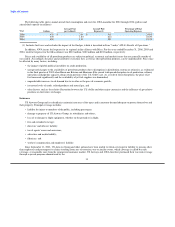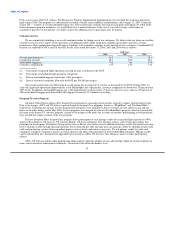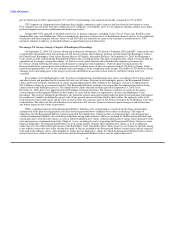US Airways 2006 Annual Report Download - page 12
Download and view the complete annual report
Please find page 12 of the 2006 US Airways annual report below. You can navigate through the pages in the report by either clicking on the pages listed below, or by using the keyword search tool below to find specific information within the annual report.
Table of Contents
Airlines, Inc. and JetBlue Airways. Some of these low cost carriers have lower operating cost structures than we have.
In addition, with its significant activity in the eastern United States, US Airways' average trip distance, or stage length, is shorter
than those of other major airlines. This makes US Airways more susceptible than other major airlines to competition from surface
transportation such as automobiles and trains.
Industry Regulation and Airport Access
Our airline subsidiaries operate under certificates of public convenience and necessity or certificates of commuter authority, both of
which are issued by the Department of Transportation (the "DOT"). These certificates may be altered, amended, modified or suspended
by the DOT if the public convenience and necessity so require, or may be revoked for failure to comply with the terms and conditions of
the certificates. US Airways and AWA currently operate under separate certificates, and are in the process of obtaining DOT approval to
combine the certificates. Approval is expected during 2007.
Airlines are also regulated by the U.S. Federal Aviation Administration (the "FAA"), primarily in the areas of flight operations,
maintenance, ground facilities and other operational and safety areas. Pursuant to these regulations, our airline subsidiaries have FAA-
approved maintenance programs for each type of aircraft they operate. The programs provide for the ongoing maintenance of such
aircraft, ranging from periodic routine inspections to major overhauls. From time to time, the FAA issues airworthiness directives and
other regulations affecting our airline subsidiaries or one or more of the aircraft types they operate. In recent years, for example, the FAA
has issued or proposed mandates relating to, among other things, enhanced ground proximity warning systems, fuselage pressure
bulkhead reinforcement, fuselage lap joint inspection rework, increased inspections and maintenance procedures to be conducted on
certain aircraft, increased cockpit security, fuel tank flammability reductions and domestic reduced vertical separation. Regulations of this
sort tend to enhance safety and increase operating costs.
The DOT allows local airport authorities to implement procedures designed to abate special noise problems, provided such
procedures do not unreasonably interfere with interstate or foreign commerce or the national transportation system. Certain locales,
including Boston, Washington, D.C., Chicago, San Diego and San Francisco, among others, have established airport restrictions to limit
noise, including restrictions on aircraft types to be used and limits on the number of hourly or daily operations or the time of these
operations. In some instances these restrictions have caused curtailments in services or increases in operating costs, and these restrictions
could limit the ability of our airline subsidiaries to expand their operations at the affected airports. Authorities at other airports may
consider adopting similar noise regulations.
The airline industry is also subject to increasingly stringent federal, state and local laws aimed at protecting the environment. Future
regulatory developments and actions could affect operations and increase operating costs for the airline industry, including our airline
subsidiaries.
Our airline subsidiaries are obligated to collect a federal excise tax, commonly referred to as the "ticket tax," on domestic and
international air transportation. Our airline subsidiaries collect the ticket tax, along with certain other U.S. and foreign taxes and user fees
on air transportation, and pass along the collected amounts to the appropriate governmental agencies. Although these taxes are not
operating expenses of the Company, they represent an additional cost to our customers.
The Aviation and Transportation Security Act (the "Aviation Security Act") was enacted in November 2001. Under the Aviation
Security Act, substantially all aspects of civil aviation security screening were federalized, and a new Transportation Security
Administration (the "TSA") under the DOT was created. TSA was then transferred to the Department of Homeland Security pursuant to
the Homeland Security Act of 2002. The Aviation Security Act, among other matters, mandates improved flight deck security; carriage at
no charge of federal air marshals; enhanced security screening of passengers, baggage, cargo, mail, employees and vendors; enhanced
security training; fingerprint-based background checks of all employees and vendor employees with access to secure areas of airports
pursuant to regulations issued in connection with the Aviation Security Act; and the provision of passenger data to U.S. Customs and
Border Protection.
9


